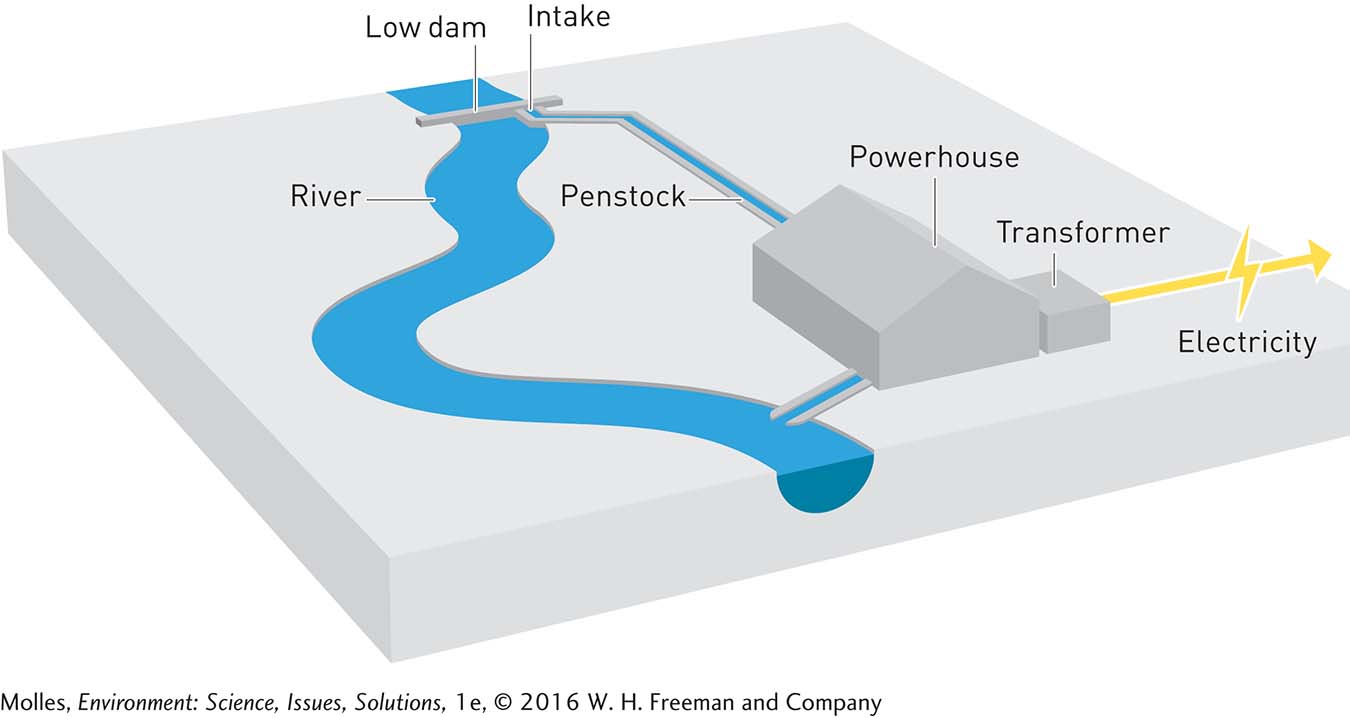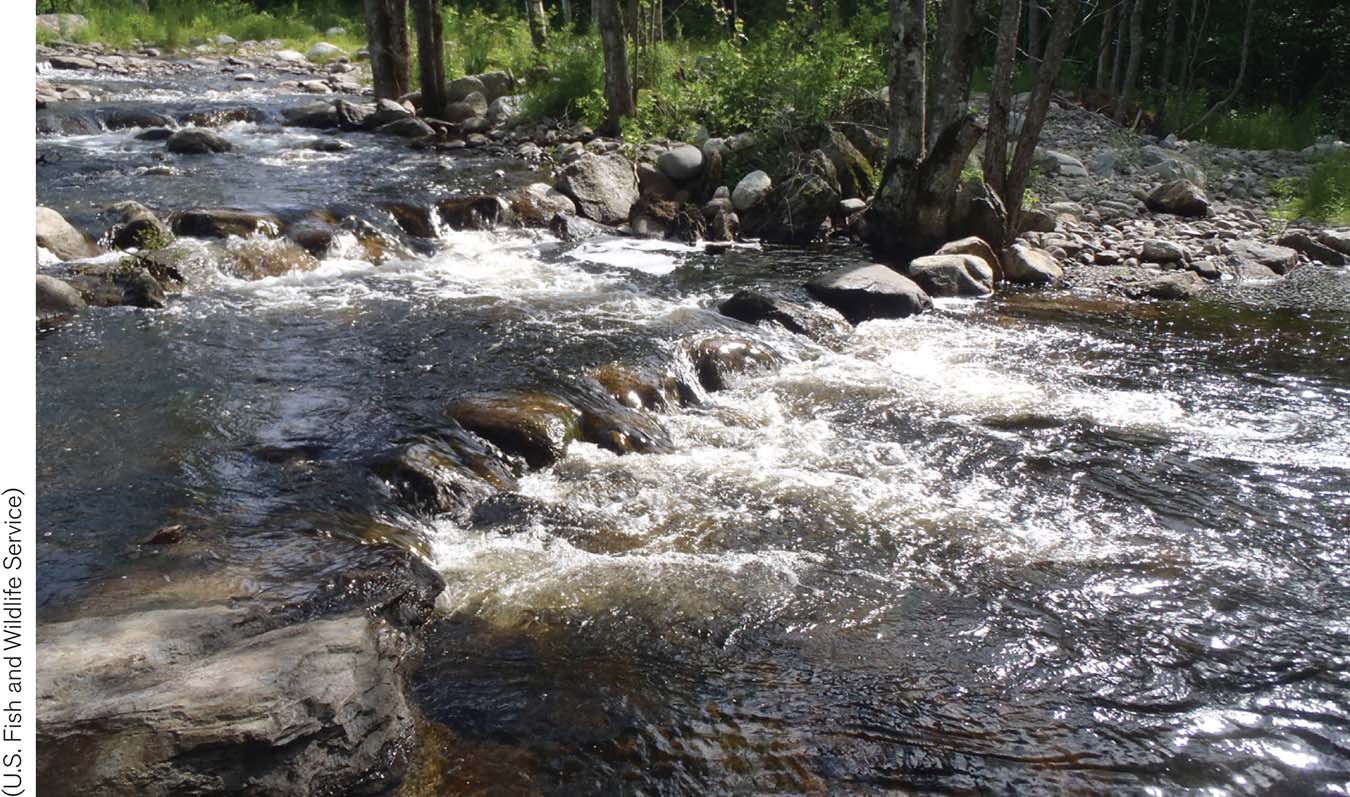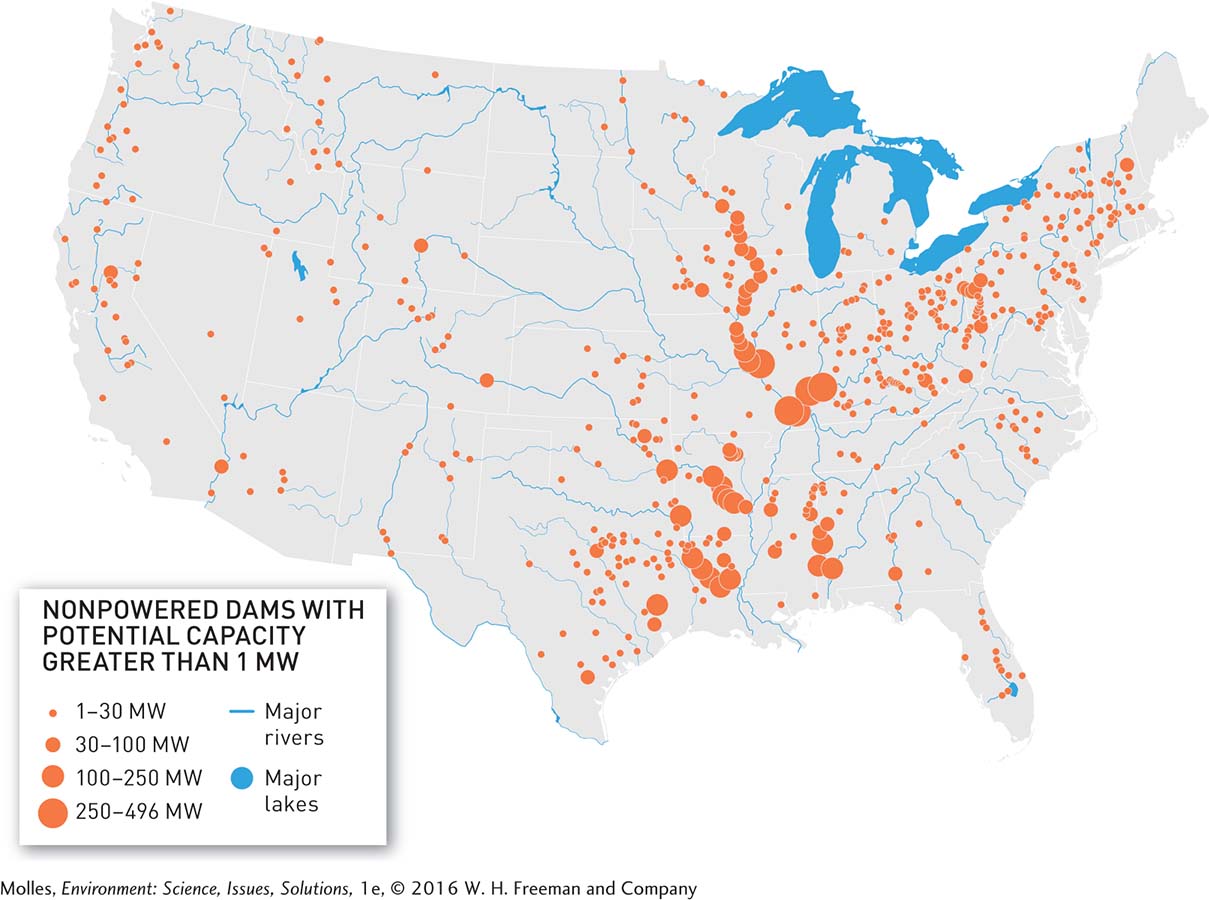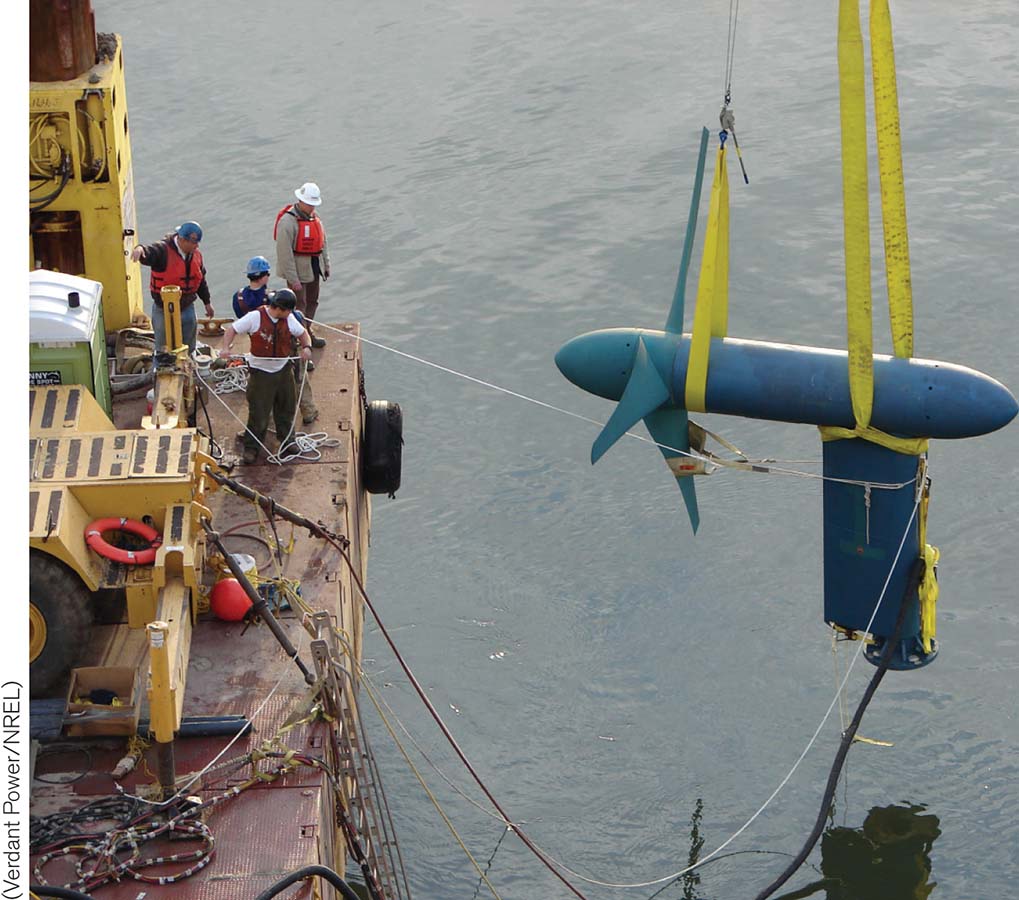10.10 Downsizing can mitigate the impacts of hydroelectric development
Many of the problems with modern hydropower projects stem from their massive size. Focusing on smaller-
Run-of-the-River Hydroelectric Systems
run-
One common alternative to erecting large dams on the main channel of a river is to erect smaller power plants. These run-


Should the amount of water diverted by run-

Retrofitting Existing Dams

What are the potential benefits to spreading generating capacity across 100 sites instead of focusing generation at just a few, Hoover Dam–
Many dams were built in the early 20th century for water storage and flood protection—

Dam-Free Hydropower
It’s not always necessary to build a dam to harness the kinetic energy of a river (Figure 10.48). In 2009 one such electric turbine was placed directly in the Mississippi River at Hastings, Minnesota. The turbine actually sits beneath the outflow of an existing, conventional hydroelectric power plant. Tests of the turbine installed at Hastings, which spins at 21 revolutions per minute, showed that over 97% of fish were able to pass through it without injury. Similar projects are planned for many of the larger rivers of the eastern half of the United States, with a total potential generating capacity of 500 megawatts.

Think About It
How could hydroelectric power complement solar and wind power in an electrical power system?
How are the impacts of hydroelectric systems on fish populations like those of wind generation on bird and bat populations? How are they different?
Page 323How might the cumulative impacts of many run-
of- the- river systems on a river equal or exceed the impacts of a few large systems?